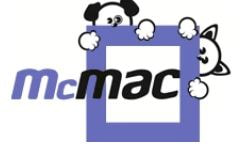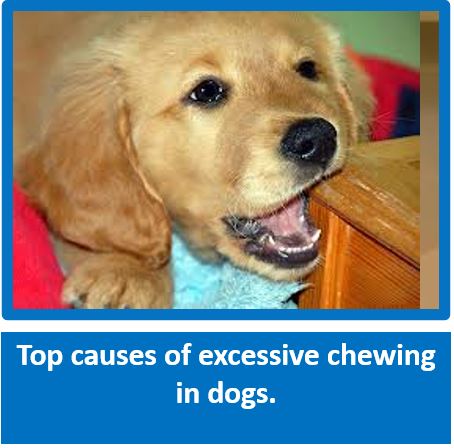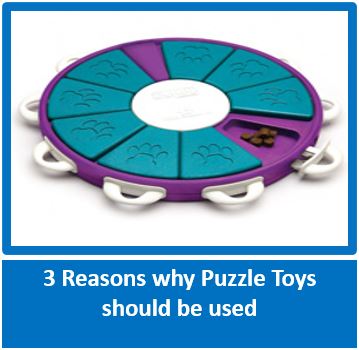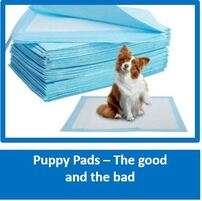|
At McMac, not only can we syupply you with Puppy Pads, we have just about everything for your pup or dog that you need. All our products are top quality and the best brands available. We have a wonderful selection of chew toys to help with those sharp little teeth and to keep brains busy and occupied. We also cater for your cat and the 'little critters'. Do have a look at what we have available, and you are welcome to contact us. www.mcmac.co.za
|
Toilet Training
By Scotty Valadao – Friends of the Dog
Your Golden Rules:
Supervise, supervise supervise
Consistency, consistency, consistency
A pup will not train itself
Supervise, supervise supervise
Consistency, consistency, consistency
A pup will not train itself
- The second the pup wakes, pick it up and take it to the elimination area, pair a cue, such as Hurry Ups as the pup performs - praise lavishly 'good hurry ups' and treat.
- As soon as the pup stops playing, repeat point 1 above
- After meals, repeat point 1 as above
- If the pup is sniffing or circling, repeat point 1 above
- If the pup has not eliminated for a while, pick it up and take it outside as point 1
- If the pup has had an accident, do not punish - rather clean with a water and vinegar solution - then hit yourself over the head with a rolled up newspaper for not supervising!
.
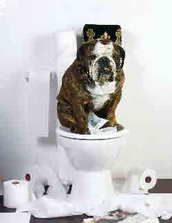
I always refer to this as toilet training as opposed to house training. The reason being it is excellent to have your dog eliminate on command even though it may live predominately outdoors. This gives you the means to ask your dog to urinate if you require a sample for the vet or even show the dog which area of the garden you want it to perform its toilet in. If you are taking your dog out in the car, you can ask it to perform its ‘business’ before you leave avoiding stops on the side of the road which can be dangerous to both you and your dog. Although this article is aimed at pups, the exact same procedure applies for adult dogs.
The act of eliminating is totally normal and what we, as owners dislike, is when the puppy performs in inappropriate places (to us at least)! Toilet training is very quickly and easily accomplished simply by praising and treating your pup every time he/she performs the behaviour. A cue such as ‘wee-wee’ or ‘hurry-ups’ can be paired with the action which will make your life even easier. The use of a crate Crate Training for toilet training makes this a much quicker exercise to master as you are controlling the situation a lot of the time. What has to be remembered is that WE have to be present in order to ensure that the pup learns and we achieve this by showing the pup what we expect, in the place we expect it and praising every single time.
Toilet training will be the first training exercise that you do with the pup. Once again, the following does sound like hard work, but all it entails is taking time and being consistent and in no time at all you will have a toilet trained puppy – what you do have to remember is that is you leave the pup to wander around unsupervised, you will have accidents, the pup cant train itself, you have to be there to supervise, as mentioned before.
Most breeds, or cross breeds will catch on quickly, however, some breeds, especially the toy breeds can take a lot longer - just preserve, it will be worth it to have a home that does not smell of dog pee!
Where toilet training is concerned, the most important factor is timing. For this we need to be aware of the normal times a puppy will eliminate and simply bring in the training at the appropriate time. On average, puppies will eliminate within about thirty second of waking up and the defecation usually takes place a couple of minutes after that. To make your life easier, wake up the puppy yourself when you see it begin to stir. Pick it up (avoids accidents) and take it to the designated place, remembering to praise as soon as the behaviour has been performed and pairing the new cue of ‘wee-wee/hurry ups’’ etc with it. Not only will the puppy start to go to the place you require, you are developing an excellent habit of going to the elimination place on waking up. Carry the treat in your hand or pocket as opposed to a moon bag. I once had a client who always used a moon bag to carry food around in and it ended up that the dog would only eliminate when she was wearing the moon bag – it associated the treats from coming from there – who said dogs are not smart!
A puppy’s bladder has a capacity of approximately 75 minutes at eight weeks, ninety minutes at approximately 12 weeks and in the region of two hours at eighteen weeks. Therefore if you take your puppy to eliminate every hour on the hour and also after playing, after eating and after sleeping and last thing at night and first thing in the morning, you are well on the way to successful toilet training. Knowing that your puppy is likely to eliminate at these specific times allows you to get your puppy to his/her spot, and most importantly allows you to praise and treat every time it happens. Teaching your pup to eliminate in one specific place also ensures that the pup does not eliminate all over the garden and especially in areas where children play. Dogs are extremely bright animals and will happily perform behaviours especially when they know that they will be treated and praised afterwards. Another indicator that your puppy may need to eliminate is if he/she starts to smell the ground and walk in circles. Being really consistent with this exercise will ensure that we don’t have a house that smells like dog pee, be able to take our dogs with us on holiday and a much better relationship with our dogs.
What to do when your puppy has an accident and performs in the house. First of all, determine why the accident happened. Did you forget to take him/her out after playing? Was the play a bit rougher than usual and the puppy got unduly excited? When you are following a toilet training routine as explained above, there are very seldom accidents, but if they do occur, examine why so that you can prevent the same thing from happening in future.
Pups that have been kept in a closed cage or pen while for sale are normally harder to housetrain as they have been forced to soil their living area. I personally believe that this has a bigger effect on pups than we imagine and causes stress. With these types of pups I would definitely recommend crate training (restricted to sleeping area only) in order to control the situation and you would be even more observant as to when the pup is about to eliminate and ensure that the pup is being watched 100% of the time. And initially, the owner goes totally overboard with praise and gives several ‘jackpots’ to encourage the reoccurrence of the behaviour you do want.
If you see your pup about to ‘squat’ to perform, pick it up quickly (this will cause the sphincter nerves to contract) and take it immediately to the toilet area. Put it down and wait till it performs, praise lavishly, and we like to bring in a cue of 'good hurryups' or similar. This cue can then be used to get the pup to eliminate on cue when older.
The one thing you do not do if your puppy does have an accident, is shout or perform, rub its nose in it or anything along those lines. Rather take a newspaper and hit yourself over the head for not realizing that it needed to eliminate in the first place! The area that has been marked needs to be cleaned as soon as possible. Do not use any household cleaning products as they often contain pine scent, chlorine or ammonia and although they may smell good to us, to a dog it makes the area smell even more like a toilet. Instead rather use one of the pet stain removers or simply use a mixture of one quarter white vinegar to half water. Whatever method used, ensure that it is cleaned several times. A dog has a far superior olfactory sense than we do and if it smells the marking, the outcome will be that it continues to use the place as an inside toilet. Make sure that the mixture will not stain your carpets or surfaces first.
When a pup is taught to eliminate in a particular area, stools should be removed twice a day. This is for several reasons – dogs do not like their toilet areas to be full of stools and if they are, they will simply start ‘spreading them around’ – picking them up will encourage the dog to eliminate in that area again - the likelihood of disease from worm infestation is reduced as is the possibility of female flies laying their eggs in dry stools thereby giving raise to further disease. It will also prevent any other dogs eating the stools or even the puppy itself eating the stools.
If you live in an apartment without a balcony or garden, or are leaving your pup in a puppy pen when you are out, you can supply a toilet by way of a sod of grass placed in a cat tray, or even better, make use of puppy pads. Just remember that you need to get the pup to use these areas as a habit first of all.
The act of eliminating is totally normal and what we, as owners dislike, is when the puppy performs in inappropriate places (to us at least)! Toilet training is very quickly and easily accomplished simply by praising and treating your pup every time he/she performs the behaviour. A cue such as ‘wee-wee’ or ‘hurry-ups’ can be paired with the action which will make your life even easier. The use of a crate Crate Training for toilet training makes this a much quicker exercise to master as you are controlling the situation a lot of the time. What has to be remembered is that WE have to be present in order to ensure that the pup learns and we achieve this by showing the pup what we expect, in the place we expect it and praising every single time.
Toilet training will be the first training exercise that you do with the pup. Once again, the following does sound like hard work, but all it entails is taking time and being consistent and in no time at all you will have a toilet trained puppy – what you do have to remember is that is you leave the pup to wander around unsupervised, you will have accidents, the pup cant train itself, you have to be there to supervise, as mentioned before.
Most breeds, or cross breeds will catch on quickly, however, some breeds, especially the toy breeds can take a lot longer - just preserve, it will be worth it to have a home that does not smell of dog pee!
Where toilet training is concerned, the most important factor is timing. For this we need to be aware of the normal times a puppy will eliminate and simply bring in the training at the appropriate time. On average, puppies will eliminate within about thirty second of waking up and the defecation usually takes place a couple of minutes after that. To make your life easier, wake up the puppy yourself when you see it begin to stir. Pick it up (avoids accidents) and take it to the designated place, remembering to praise as soon as the behaviour has been performed and pairing the new cue of ‘wee-wee/hurry ups’’ etc with it. Not only will the puppy start to go to the place you require, you are developing an excellent habit of going to the elimination place on waking up. Carry the treat in your hand or pocket as opposed to a moon bag. I once had a client who always used a moon bag to carry food around in and it ended up that the dog would only eliminate when she was wearing the moon bag – it associated the treats from coming from there – who said dogs are not smart!
A puppy’s bladder has a capacity of approximately 75 minutes at eight weeks, ninety minutes at approximately 12 weeks and in the region of two hours at eighteen weeks. Therefore if you take your puppy to eliminate every hour on the hour and also after playing, after eating and after sleeping and last thing at night and first thing in the morning, you are well on the way to successful toilet training. Knowing that your puppy is likely to eliminate at these specific times allows you to get your puppy to his/her spot, and most importantly allows you to praise and treat every time it happens. Teaching your pup to eliminate in one specific place also ensures that the pup does not eliminate all over the garden and especially in areas where children play. Dogs are extremely bright animals and will happily perform behaviours especially when they know that they will be treated and praised afterwards. Another indicator that your puppy may need to eliminate is if he/she starts to smell the ground and walk in circles. Being really consistent with this exercise will ensure that we don’t have a house that smells like dog pee, be able to take our dogs with us on holiday and a much better relationship with our dogs.
What to do when your puppy has an accident and performs in the house. First of all, determine why the accident happened. Did you forget to take him/her out after playing? Was the play a bit rougher than usual and the puppy got unduly excited? When you are following a toilet training routine as explained above, there are very seldom accidents, but if they do occur, examine why so that you can prevent the same thing from happening in future.
Pups that have been kept in a closed cage or pen while for sale are normally harder to housetrain as they have been forced to soil their living area. I personally believe that this has a bigger effect on pups than we imagine and causes stress. With these types of pups I would definitely recommend crate training (restricted to sleeping area only) in order to control the situation and you would be even more observant as to when the pup is about to eliminate and ensure that the pup is being watched 100% of the time. And initially, the owner goes totally overboard with praise and gives several ‘jackpots’ to encourage the reoccurrence of the behaviour you do want.
If you see your pup about to ‘squat’ to perform, pick it up quickly (this will cause the sphincter nerves to contract) and take it immediately to the toilet area. Put it down and wait till it performs, praise lavishly, and we like to bring in a cue of 'good hurryups' or similar. This cue can then be used to get the pup to eliminate on cue when older.
The one thing you do not do if your puppy does have an accident, is shout or perform, rub its nose in it or anything along those lines. Rather take a newspaper and hit yourself over the head for not realizing that it needed to eliminate in the first place! The area that has been marked needs to be cleaned as soon as possible. Do not use any household cleaning products as they often contain pine scent, chlorine or ammonia and although they may smell good to us, to a dog it makes the area smell even more like a toilet. Instead rather use one of the pet stain removers or simply use a mixture of one quarter white vinegar to half water. Whatever method used, ensure that it is cleaned several times. A dog has a far superior olfactory sense than we do and if it smells the marking, the outcome will be that it continues to use the place as an inside toilet. Make sure that the mixture will not stain your carpets or surfaces first.
When a pup is taught to eliminate in a particular area, stools should be removed twice a day. This is for several reasons – dogs do not like their toilet areas to be full of stools and if they are, they will simply start ‘spreading them around’ – picking them up will encourage the dog to eliminate in that area again - the likelihood of disease from worm infestation is reduced as is the possibility of female flies laying their eggs in dry stools thereby giving raise to further disease. It will also prevent any other dogs eating the stools or even the puppy itself eating the stools.
If you live in an apartment without a balcony or garden, or are leaving your pup in a puppy pen when you are out, you can supply a toilet by way of a sod of grass placed in a cat tray, or even better, make use of puppy pads. Just remember that you need to get the pup to use these areas as a habit first of all.

